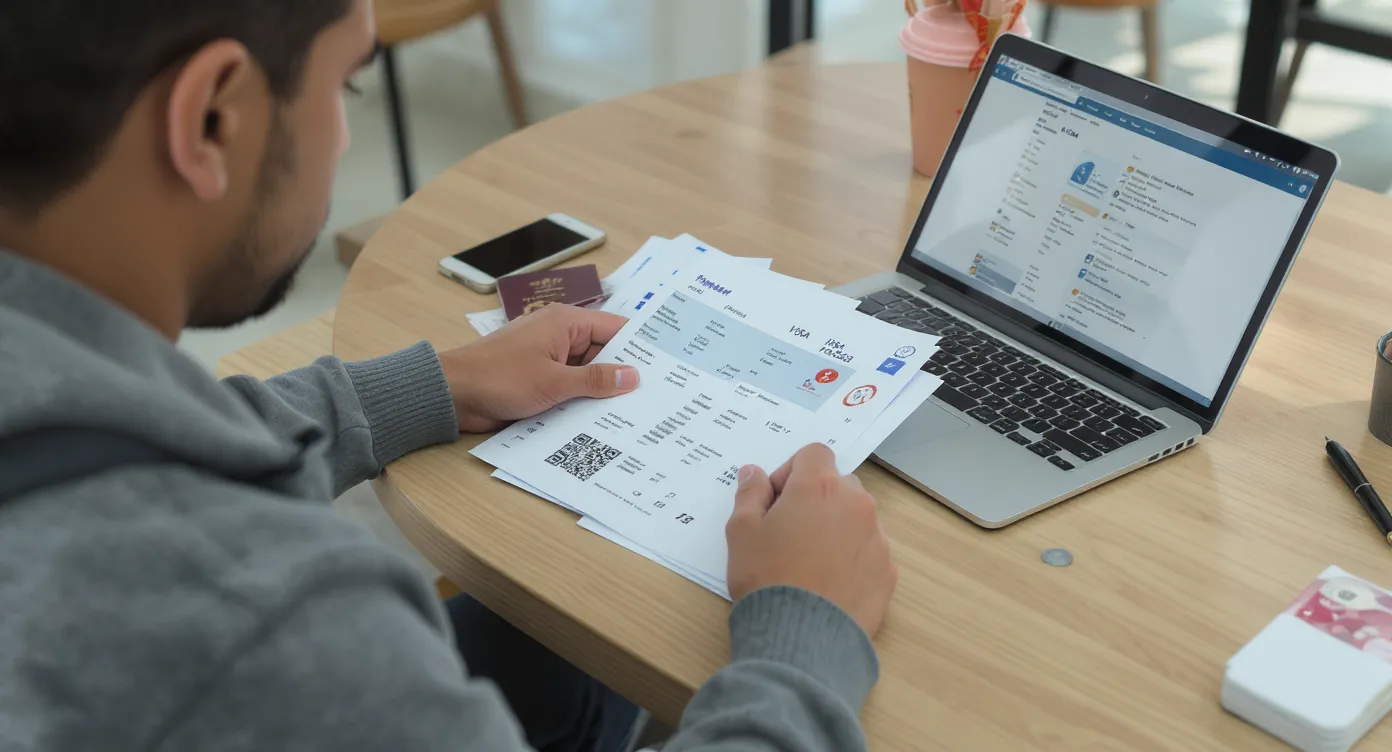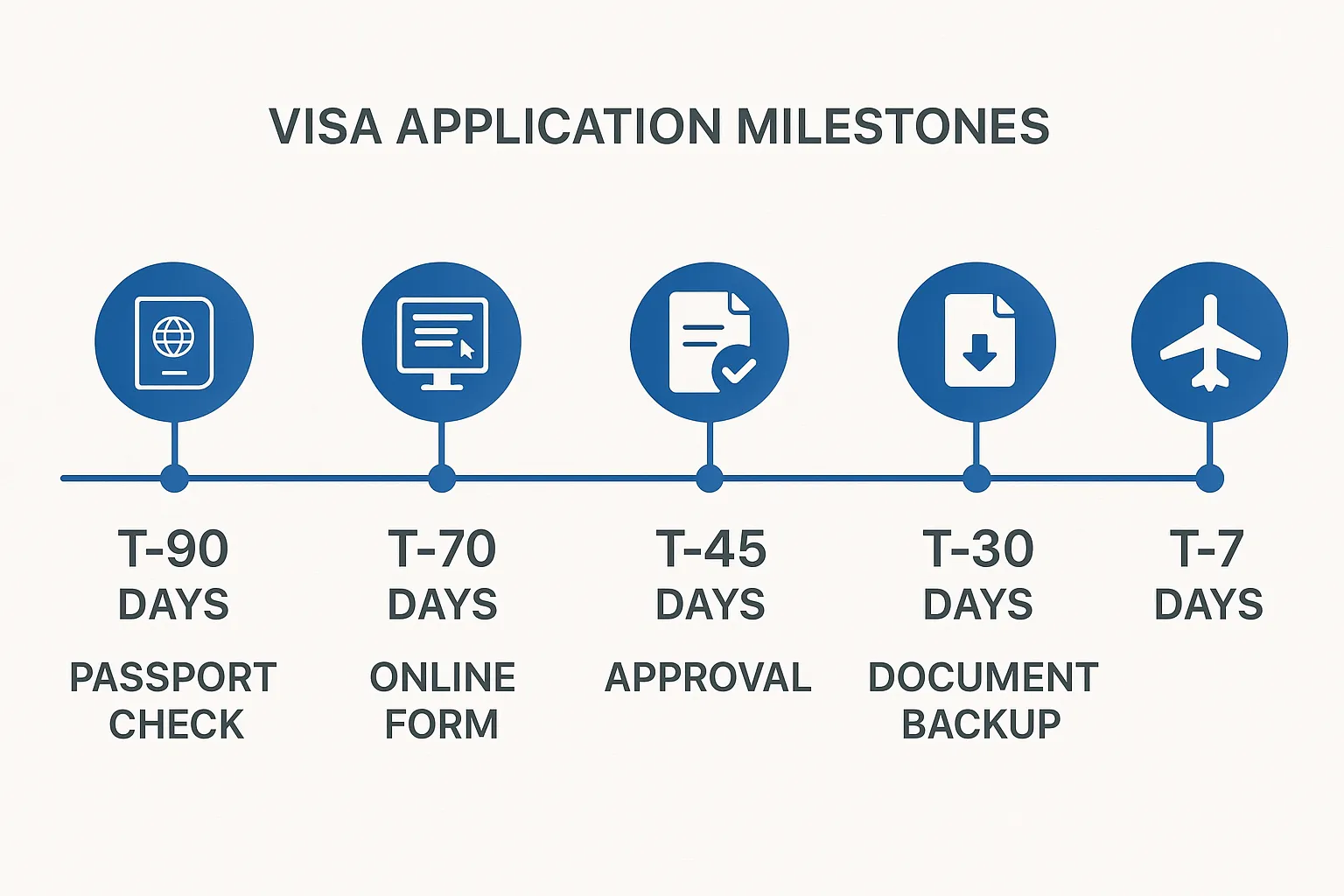Visa and Travel: Aligning Documents with Your Itinerary

Planning the perfect trip is more than booking flights and hotels. Border authorities will read your passport and visas before they look at your boarding pass, so every document in your wallet (digital or paper) must match the story your itinerary tells. Misalignment can trigger denied boarding, expensive re-routing, or a vacation that ends at the immigration desk. Below is a step-by-step playbook for keeping visa and travel plans in sync, plus advice on harnessing tools like SimpleVisa to remove last-minute surprises.
1. Map Your Complete Route—Including Every Stop
A surprising number of travelers focus on the final destination and forget that each airport, seaport, or land crossing on the way may impose its own entry rules. Begin by writing down every country you will physically enter—even if only for a layover outside the transit zone.
| Itinerary Element | Typical Document Check | Common Gotcha |
|---|---|---|
| Direct flight to one country | Single visa or ETA | Validity shorter than total stay |
| Air transit with two separate tickets | Transit visa for the layover state | Wrong assumption that “I won’t leave the airport” suffices |
| Open-jaw or multi-city loop (e.g., Paris > Rome > Athens) | Multiple visas or a regional authorization such as ETIAS | Overstaying the 90-days-in-180-days rule |
| Cruise itineraries | Shore-specific visas, sometimes issued on board | Ports added after booking can change requirements |
| Overland border crossings | Visa plus land-border entry forms | Land-border fees payable only in cash |
Take this list and run it through an authoritative database such as the IATA Travel Centre (https://www.iatatravelcentre.com/) or an automated rules engine like the one that powers SimpleVisa.
2. Check Visa Type, Validity, and Entry Counts
Not all visas are created equal, even inside a single country’s system. Pay close attention to:
- Purpose: tourist, business, transit, study, or work. Using the wrong type can lead to refusal at the gate.
- Number of entries: single, double, or multiple. A round-trip with a side excursion may silently need two entries.
- Validity window: the period in which you can enter, separate from the number of days you may stay. For example, a U.S. ESTA is valid for two years but limits each stay to 90 days.
If your route changes, revisit these variables immediately. Our article on When should I apply for an e-visa for my 2025 travel plans? links deeper timing advice (https://simplevisa.com/when-should-i-apply-for-an-e-visa-for-my-2025-travel-plans/).
3. Sequence Your Applications for Smooth Processing
Timing errors derail thousands of trips every year. A 2024 study by the World Travel & Tourism Council found that 20 percent of visa refusals stem from incomplete or late submissions. Avoid that outcome with this simple timeline:
- T-90 days: Verify passport validity (many destinations demand six months beyond your return date).
- T-70 to T-60: Submit e-visa or ETA applications with longer processing times (India, Saudi Arabia, certain work visas).
- T-45: File for quicker digital authorizations such as ETIAS or UK ETA. Our Step-by-Step Guide to Applying for ETIAS Authorization provides detailed form screenshots (https://simplevisa.com/step-by-step-guide-to-applying-for-etias-authorization/).
- T-30: Check transit visas for new layovers that appear after airlines adjust schedules.
- T-7: Re-download approved e-visas to your phone, print at least one spare copy, and confirm barcode or QR readability.

4. Ensure Data Consistency Across All Bookings
Immigration databases run automated name-matching algorithms. Any mismatch—even a missing middle name—can trigger secondary screening. Double-check that these fields are identical everywhere:
- Full name (including accents if used in your passport)
- Passport number and expiration date
- Date of birth
- Flight or cruise reservation codes referenced in visa applications
Tip: if you renew your passport after receiving an e-visa, follow the country-specific transfer procedure (see How to Transfer Your Electronic Visa to a New Passport, https://simplevisa.com/how-to-transfer-your-e-visa-to-a-new-passport/).
5. Align Stay Duration With Visa Validity Rules
Some regions use rolling limits. The classic example is Schengen’s 90-days-in-180-days rule. To avoid overstays:
- Count the exact days you will spend inside the zone, including the day of entry and exit.
- Use an online calculator or spreadsheet to project future trips; the 180-day window moves with every date.
- Consider a multiple-entry visa or residence permit if you need longer flexibility.
6. Scenario Walk-Throughs: Where Travelers Slip Up
- Dual layover trap: A U.S. traveler flying Los Angeles–Istanbul–Nairobi assumes Turkey is a “just a layover.” Because the onward flight is on a separate ticket, they must exit air-side and therefore need a Turkish e-visa. Solution: verify transit rules for each PNR combination.
- Festival extension: A backpacker plans 25 days in Thailand on a 30-day visa-exempt stamp but adds a side trip to Laos. Re-entering Thailand would exceed the original allowance. Solution: apply for a multiple-entry tourist e-visa in advance.
- Name mismatch: Cruise line ticket shows “J. R. Smith,” but the Philippine e-Visa lists “John Robert Smith.” The ship’s manifest upload fails, triggering manual review. Solution: use the passport’s machine-readable zone spelling in every system.
7. Build a Digital Safety Net
Document misalignment sometimes surfaces only at boarding. Protect yourself by:
- Cloud-syncing approved visas in PDF format to an offline device and a secure cloud drive.
- Printing one color copy per visa; some remote checkpoints lack reliable scanners.
- Registering with your embassy for real-time alerts.
Our guide 10 Things to Do If Your Electronic Visa is Lost or Stolen offers more contingency tactics (https://simplevisa.com/10-things-to-do-if-your-electronic-visa-is-lost-or-stolen/).

8. How SimpleVisa Keeps Itinerary and Documents in Sync
SimpleVisa’s platform cross-checks passport details, travel dates, and airline or agency itineraries against the latest government databases. Within a single API call or a no-code white-label widget, our rules engine surfaces:
- Real-time eligibility and visa type recommendations
- The earliest safe application date and forecasted approval window
- Auto-prefilled application forms that mirror your booking data
If requirements shift—say, a new transit rule in Doha—customers receive automated alerts with next-step links. Travel brands see fewer support tickets and unlock ancillary revenue, while travelers earn peace of mind.
Ready to align every document with your next itinerary? Explore SimpleVisa’s traveler app or request an integration demo at simplevisa.com today.